INTRODUCTION TO NEGATIVE STAINING TECHNIQUE
Sometimes it is more convenient to determine the overall bacterial cell morphology without any use of harsh staining or heat fixing techniques that changes the shape of the bacterial cells.
The negative staining is preferred in cases when the bacterium does not stain well (e.g. some of the spirochetes) or when it is desirable to confirm observations made on the shape and size or Morphology of the bacteria observed either in a wet mount or hanging drop preparations etc.
Negative staining is also good for viewing capsules but preferably Capsule staining is done in those cases.
Briefly, in negative staining technique, the background is stained and the bacterial cell remains colorless. Moreover, Negative staining is the only staining technique in which bacterial cells are not stained but they are made visible against a dark background as colorless bodies.
PRINCIPLE OF NEGATIVE STAINING TECHNIQUE
In Negative staining technique, an acidic stain such as Nigrosin, India ink, Eosin or Congo red is used in which the bacterial culture or the specimen is mixed well and then spread over the Microscopic glass slide to form a thin smear.
The above-mentioned stains do not penetrate and stains the bacterial cell due to repulsion between the negative charge of the stain and the negatively charged bacterial cell wall.
Instead, these stains either produce a deposit around the bacteria or produce a dark background so that the bacteria appear as the unstained cell with a clear area around them. Hence in Negative staining Background is stained instead of Bacterial cells.
MATERIALS REQUIRED FOR THE NEGATIVE STAINING METHOD
- Microscopic glass slide
- Inoculating loop
- Spirit Lamp
- Staining Rack
- Wash bottle
- India Ink / Nigrosine
- Microscope (with 100X objective lens)
PROCEDURE OF NEGATIVE STAINING TECHNIQUE
⇒ Take a clean, Dry, Scratch and Grease free Microscopic glass slide and place a drop of India ink or Nigrosin on it at one end near the edge.
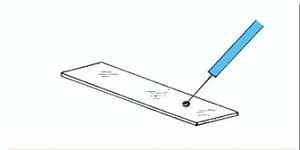
⇒ Take a small portion of the bacterial colony with the help of sterilized Inoculating loop.
⇒ Mix well the culture with dye taken on the Glass slide.
⇒ Now, take another Microscopic Glass slide, place it near to the specimen-dye mixture at an angle of about 30° – 45°.
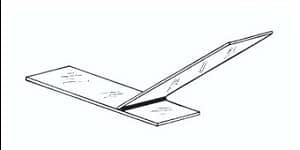
⇒ Move the slide toward the drop of the specimen-dye mixture until the contact is made with the drop at the specific angle. Then move the spreader slide smoothly and rapidly forward over the specimen slide, drawing the dye mixture behind it into a thin film.
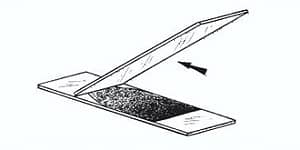
Alternatively,
⇒ Take a drop of nigrosine or India ink and place it in the middle of the Clean & Grease free Glass slide.
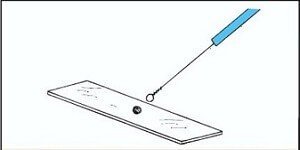
⇒ Now, with the help of Sterilized inoculating loop transfer a small portion of the specimen to the slide containing a Drop of Dye.
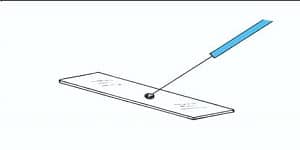
⇒ Mix well the Specimen with the Dye using the sterilized straight wire and spread evenly over an area of about 1 – 2 cm.
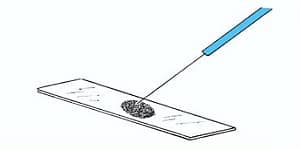
⇒ Allow the smear to Air dry and then observe under the microscope at High power objective (45X) and oil immersion (100X) objectives.
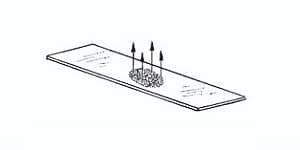
OBSERVATIONS & RESULTS ON NEGATIVE STAINING
In Negative staining Preparations, the Bacterial cells observed as the Clear transparent bodies or objects, may be of variable size and shape if you are using a mixture of bacteria, against a dark background.
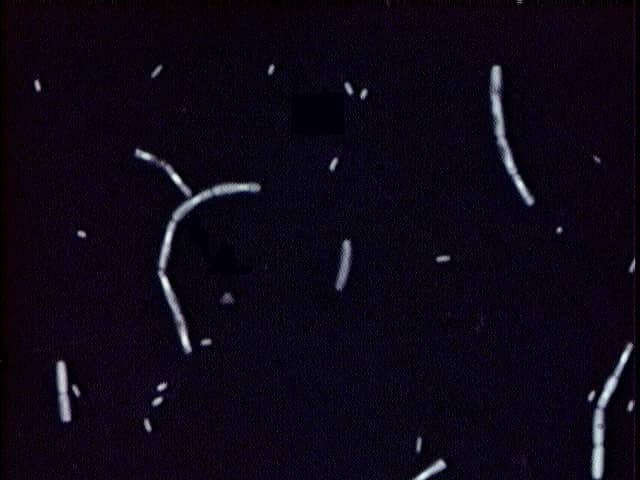
FACTS ABOUT NEGATIVE STAINING
⇒ In Negative staining method, we stain the background and not the bacterial cells so after drying there is no need of washing step and the slide is directly observed under oil immersion objectives (100 X).
⇒ In Negative staining method, heat fixation step is avoided because heat fixation can alter morphological characters of the bacterial cell, melt the capsule or slime layer and distorts the actual morphology.

APPLICATION OF NEGATIVE STAINING
⇒ This method is commonly used to study the morphological characters of cell that includes the size, shape, and arrangement of bacterial cells without distorting their actual characters.
⇒ This method is quite easy and useful in observing the bacterial cells that are difficult to stain by other staining techniques. For e.g. – Spirillum, Spirochetes etc.
⇒ This Staining method can also be used to observe the capsules of the bacteria.
That’s all about the Negative Staining Technique – Introduction, Principle, Procedure, Results & Applications
Further Reading:
A study of the Negative staining Process – Microbiology Research
Various Staining protocols – Microbugz
Negative Stain Results – Homepage.wmich
Negative Staining Method and its Mechanism – General microscience
Microscope slide technique – Microscope science

Hi, I’m the Founder and Developer of Paramedics World, a blog truly devoted to Paramedics. I am a Medical Lab Tech, a Web Developer and Bibliophiliac. My greatest hobby is to teach and motivate other peoples to do whatever they wanna do in life.
Can Methylene Blue or Malachite Green be used on this Negative process.?
the pictures in the articles gave even more clarity
It really helped me a lot… Thank you 🙏